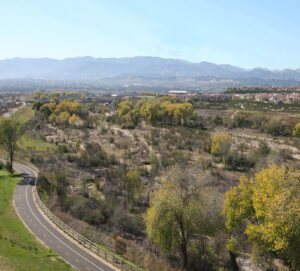Effluent discharge studies exploring management options for offsetting stream temperature increases

A pair of studies investigating how discharges of treated wastewater effluent into the Los Angeles and upper Santa Clara Rivers affect stream health has begun exploring a range of potential management options for how to offset increased water temperatures – the latest step in an ongoing investigation that could be widely applicable to other Southern California streams facing temperature management challenges.
The scenario development phase, launched in May, is exploring how combinations of traditional engineered solutions, including process modifications and effluent chiller systems that cool wastewater before being discharged, might be used in tandem with nature-based solutions to optimally mitigate increased water temperatures. Nature-based solutions refer to any landscape or structural modification that is designed to improve or protect ecological health by closely mimicking natural processes; these solutions include shading and mixing surface waters with groundwater.
The study is motivated by a new generation of wastewater discharge permits that have lowered the maximum temperature at which receiving water is required to be maintained from 86 to 80 degrees Fahrenheit; the permits also prohibit effluent discharges from triggering more than a 5-degree increase in water temperature.
The lower allowable temperatures are more difficult to reach because wastewater effluent is typically discharged into streams above the stream’s ambient temperature.
More news related to: Ecohydrology